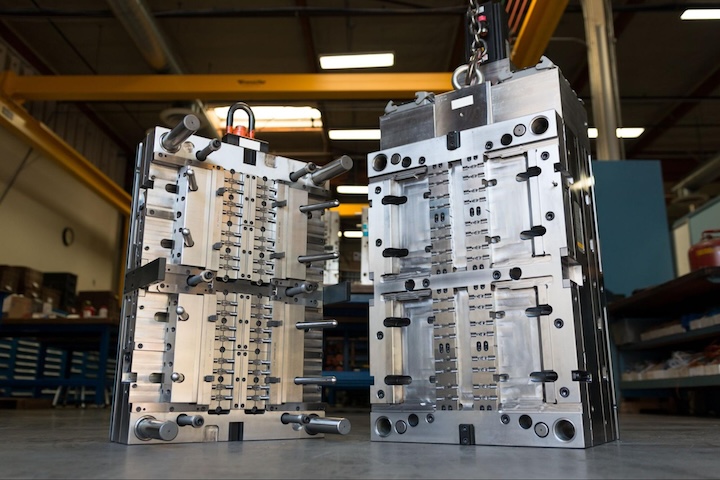Time to read: 7 min
When it comes to manufacturing in China, there’s one idea that seems to dominate the conversation: relationships are everything. Success seems to revolve around your ability to build strong relationships with the right people who will introduce you to the right factories. Moreover, continued success depends on maintaining a strong relationship with that factory so they’ll continue to produce quality products for you.
Greg Fisher, Founder and CEO of Berkeley Sourcing Group sees the challenge differently. “To me, relationships with factories in China is our least valuable asset,” Greg remarks. “Rather the process we’ve developed to work with the factories is the foundational element. Relationships are important, but they’re not the central key to successful manufacturing in China.”
This is good news for early startups looking to get into the Chinese manufacturing game without relationships to lean on. If that’s you, then take notes: in this article Greg shares why relationship-oriented solutions are flawed and the central components of the process he’s developed over 10 years working with factories in China.
Relationships are Variable and Time Consuming
Greg is highly aware that business in China is in fact very relationship-oriented and to build trusted relationships is always a positive action. The problem however with a manufacturing strategy that relies centrally on relationships is that they are highly variable and time consuming.
“The manufacturing industry in China is changing so quickly,” Greg says. “So each time we get a quote we also get quotes from factories we’ve never worked with before to compare pricing to see if there are better partners out there.”
Relationships with factories are also highly dependent on the factory’s fiscal situation and the needs (and size) of their other clients. For example, you could build a good relationship with a factory and then they get a big order from Walmart. Then all of a sudden your order as a startup isn’t worth much to them; now they aren’t a good factory for you anymore and you need to be ready to move on.
“The same factory can often be a good factory or a bad factory depending on how you manage them”

Beyond variability, relationships are also time consuming and time is not something most startups have in expendable quantities. Yet spending years living next door to a factory in Shenzhen seem unavoidable for the hardware startup founder or engineer looking to build quality products.
Greg questions the premise and necessity of this solution. “Instead of investing time attending every detail at your factory in person, you should invest more in process,” Greg offers. “If you can establish the right quality expectations before entering into a contract with a factory, they have no excuse to produce poor quality products for you because they know you won’t accept a product if it doesn’t exactly meet the guidelines you established in the first place. If the right process is in place then it’s not so important to be at the factory in person to monitor every step.”
Invest in process as the constant variable in a business relationship with your factory in China and you won’t have to invest so much time and energy on the ground in China.
Develop Your Own Inspection Guidelines
The most critical step toward establishing those expectations is to include the right materials to send to a factory before receiving a quote and then to create a detailed set of inspection guidelines before entering into a contract.
Getting a Quote
Here’s a list of the materials you need to send a factory in China before you can receive a quote:
BOM (Bill of Materials) – here’s a few good examples 3D drawings (for metals, include 2D drawings primarily but 3D drawings are also helpful)A functional prototype with 3D printsComponent specifications (what the components are made of)Functional specifications (how the product is expected to be used)
The more specific and detailed you can be with each of these materials, the better. This will establish a clear outline of the product you’re developing so you’ll get a very detailed quote in return and there won’t be any discrepancies as to cost.
“Even with a good design, there’s always a thousand little things to figure out.”

Inspection Guidelines
After you’ve received a quote and before you enter into a contract with a factory, you need to develop your own detailed inspection guidelines. “The most important thing you can do working with a factory in China is to establish very clear inspection guidelines,” Greg stresses.
More specifically, it’s important to know the difference between specifications and inspection guidelines. Specifications define what the product should be while an inspection guideline is how you will measure that specification. You need to have a specific tool that’s going to measure each feature of your product and a specific result that will tell you if it’s right or wrong, good or bad.
“The same factory can often be a good factory or a bad factory depending on how you manage them,” Greg says. “If a factory manager knows you’re going to inspect the product according to the very detailed guidelines you’ve established, they have no reason not to make a product that won’t meet those guidelines.”
For an example of a detailed set of inspection guidelines, check out Moog’s Supplier Quality Requirements.
Push on Quality and Commitment, Not Price
With a highly detailed package of product specifications and inspection guidelines, you’ve established clearly what the project requirements are, which informs what the project should cost.
“People are always pushing on price – they think that’s where the room is, but there’s no room there. It’s business so either it’s going to work or it’s not,” Greg says. “We push on quality and we push on commitment, but the price is never something we push on just to try and get a good deal.”
This is a very different relationship than most factories are used to – factories will often either lowball or highball a quote for different reasons. At the beginning of a relationship, factories may lowball a quote just to get your business. On the other end of the spectrum, a factory manager might argue the price should be higher because x material is more expensive this year or rent has increased.
This is where the advice of a consultant who’s worked with factories in China before and knows what things should cost can be helpful. But if you’re bootstrapping it, make sure to do your research ahead of time so you know exactly what to expect in a quote.
Mistakes are inevitable – what’s important is that you allow enough time to manage and correct those mistakes.
“If the quoted price is too high, we tell them and if the quoted price is too low, we also tell them,” Greg adds. “The goal is to establish an understanding that quality and commitment are the most important things and we want to pay a fair price to get that quality.”
This focus on quality over price also establishes a good faith relationship between you and your factory which, as mentioned earlier, is still always a positive thing.

“I’ve found when you approach it the right way, when you’re open and honest about your expectations, factory managers respect this and it sets the right tone for the business relationship,” Greg shares. “There have been times when an unforeseen problem arose which caused a great number of defects and the factory absorbed the cost. This happened because they appreciated how we worked with them and everything was clear from the outset.”
Don’t look for a deal; aim to get a fair price to establish expectations of quality and commitment.
For Timing, Permit Mistakes
In order to truly focus on quality production, you have to allow breathing room in a production schedule to account for mistakes, both human and machine.
“Even with a good design, there’s always a thousand little things to figure out,” Greg notes. “Those problems will inevitably bubble up and it might be tempting to blame it on the factory, but don’t. Mistakes are inevitable – what’s important is that you allow enough time to manage and correct those mistakes.”
You may need to go back and modify a tool five times, for example, and it can be frustrating. But if you skip that fifth modification to go straight to production with 1000 units and they don’t fit in the mold, you just went from losing 5 days to losing a month as well as a lot of cash and effort.
“The goal is to establish an understanding that quality and commitment are the most important things.”
Quality control, which requires that detailed set of inspection guidelines, will help to mitigate potential errors, but they should still be expected and allowed for. The key here is to work with your factory to problem solve obstacles to make the best product possible.
There are, however, some actions that can help accelerate timing. With injection molding, for example, working with smaller factories and large volumes in China can get you faster lead times.
“During most of the manufacturing time you’re just waiting in line,” Greg remarks. “The quote is 60 or 45 days and 25 of those days nothing is happening – you’re just waiting for the machine to open up or for the engineer to have time. It’s usually only 15-18 days of tool cutting, 25 in total to include 1 or 2 modification trials.”
Work to reduce inefficiencies like these to accelerate timing but don’t expect everything to go exactly according to plan; expect obstacles and they won’t be so ominous.
The main takeaway here is to focus on the process. If you invest in a detailed process so both you and your factory understand when things are right and when changes need to be made, you can be assured from the beginning that you will achieve the product you’ve set out to create.










